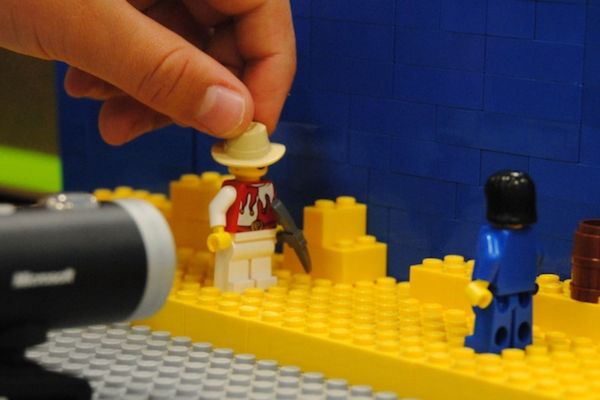Animate with objects
Make a simple stop-motion animation using everyday objects, a smartphone or tablet, and frame-by-frame movement to tell a short story.



Step-by-step guide to make a stop-motion animation with everyday objects
🎬 How to Create a 3D Animated Video for Kids Using Just ONE App! (No Watermark!) 🎨✨
Step 1
Gather your chosen toys or objects and bring them to the table.
Step 2
Think of a simple story with a clear beginning middle and end in one short sentence.
Step 3
Draw a three-panel storyboard on paper showing the three main actions of your story.
Step 4
Pick 2 to 4 objects to be your characters and props.
Step 5
Tape the plain background paper upright behind the table to make a clean stage.
Step 6
Place your chosen objects on the table in the starting position for panel one.
Step 7
Position the lamp so the stage is evenly lit and shadows stay in the same place.
Step 8
Ask an adult to place a phone or tablet on the stack of books or tripod aimed at the stage.
Step 9
Ask the adult to open the camera or a stop-motion app on the device.
Step 10
Use the device screen to frame the stage so all action fits in the shot.
Step 11
Take the first photo to capture the starting position.
Step 12
Move the objects a tiny bit toward the next action in your storyboard.
Step 13
Take the next photo to capture the small movement.
Step 14
Continue making tiny moves and taking one photo after each move until you have captured every panel of your storyboard.
Step 15
Ask an adult to help share your finished creation on DIY.org.
Final steps
You're almost there! Complete all the steps, bring your creation to life, post it, and conquer the challenge!


Help!?
What can we use if we don't have a tripod, plain background paper, or a lamp?
Use a stable stack of books or a shelf to hold the phone, tape a sheet or use a plain wall as your background paper, and use natural daylight from a window or another household lamp to keep the stage evenly lit.
My photos come out shaky or the objects seem to jump between frames—how do I fix that?
Firmly secure the device on the stack of books or tripod and ask an adult to steady it, make smaller 'tiny moves' of the objects between each photo, and avoid moving the lamp or background so shadows stay consistent.
How can I adapt this stop-motion activity for different ages?
For younger kids use 2 chunky toys, a one-sentence story and bigger moves with fewer photos, while older kids can use 3–4 detailed props, a precise three-panel storyboard, finer tiny moves, and a stop-motion app's editing tools before sharing on DIY.org.
How can we enhance or personalize our finished animation?
Decorate or paint the plain background paper, dress or modify your 2–4 objects as characters, add narration or sound effects recorded on the phone, and increase the number of photos per storyboard panel for smoother motion before uploading to DIY.org.
Watch videos on how to make a stop-motion animation with everyday objects
ABCya Animate Tutorial
Facts about stop-motion animation
⏳ Stop-motion tricks go way back — filmmakers like Georges Méliès used similar techniques over a century ago to create magical effects.
🧷 Everyday objects like socks, toys, paperclips, and fruit can become lovable characters — pros use found objects too!
📱 Modern smartphones can run stop-motion apps and let you capture one frame at a time, turning any phone into a movie camera.
👻 Onion-skinning is a handy feature in many stop-motion apps that shows a faint 'ghost' of the previous frame to help line up tiny movements.
🎬 Stop-motion often uses 12–24 frames per second — so a one-minute animation can need about 720–1,440 photos!
How do you animate with everyday objects to make a simple stop-motion story?
What materials do I need to make a stop-motion animation with toys and a tablet?
What ages is stop-motion animation suitable for?
What are the benefits of making stop-motion animations with kids?


One subscription, many ways to play and learn.
Only $6.99 after trial. No credit card required



